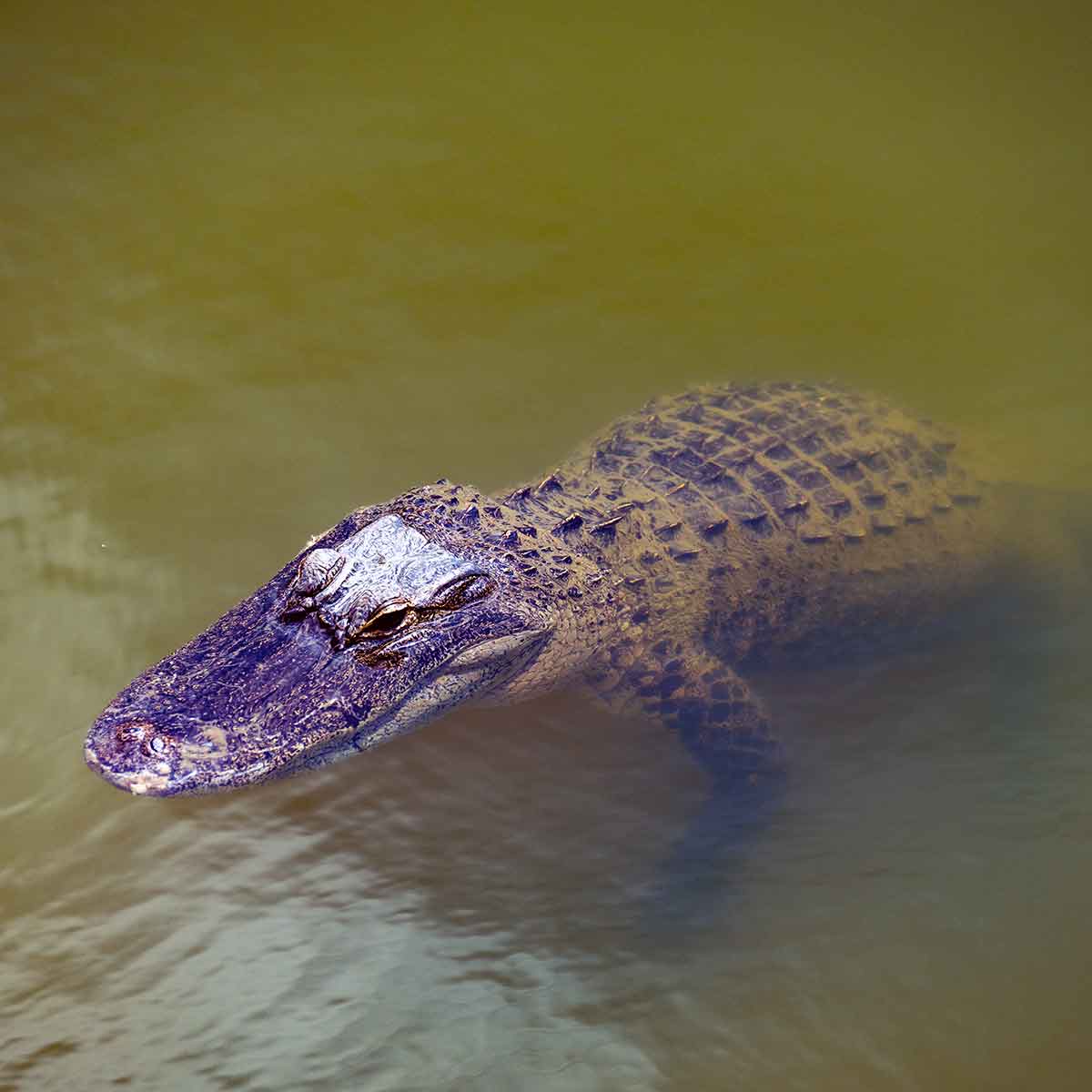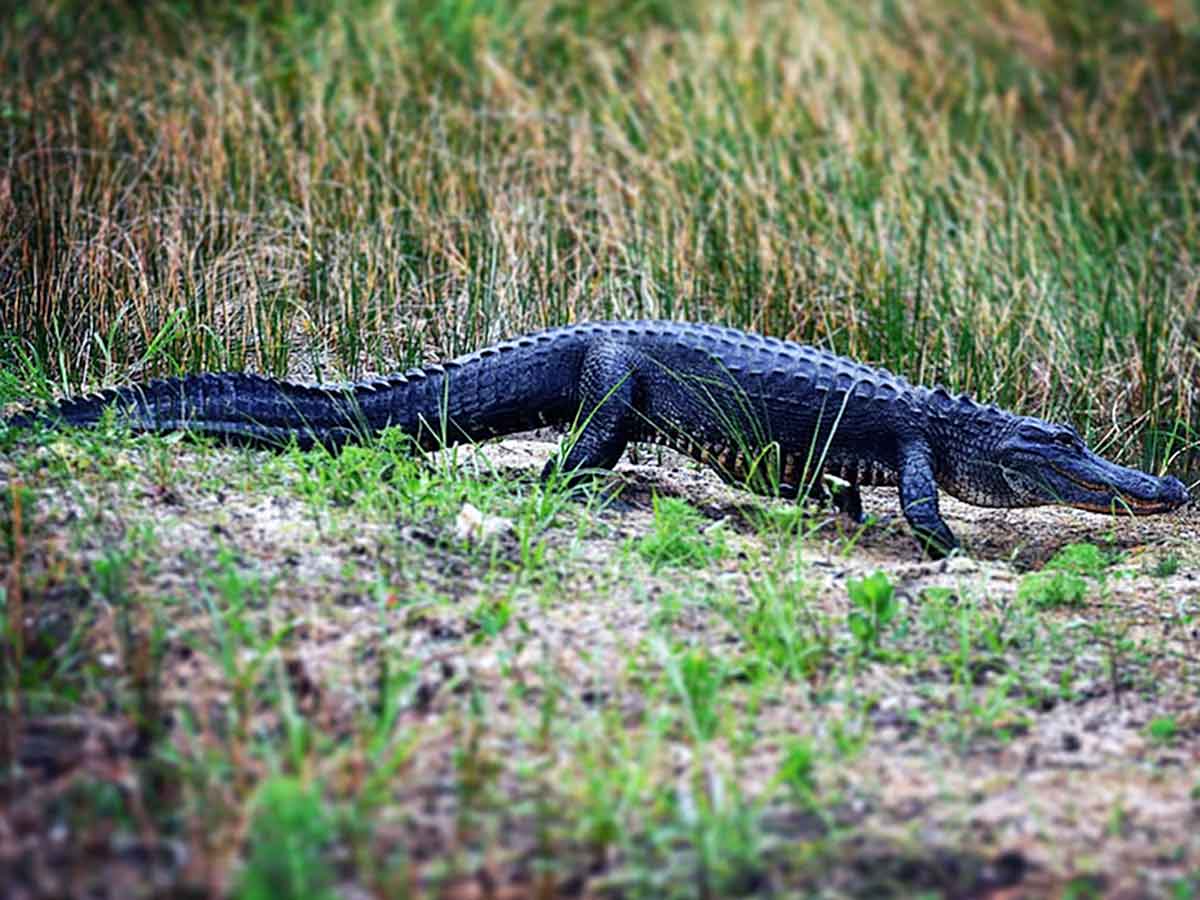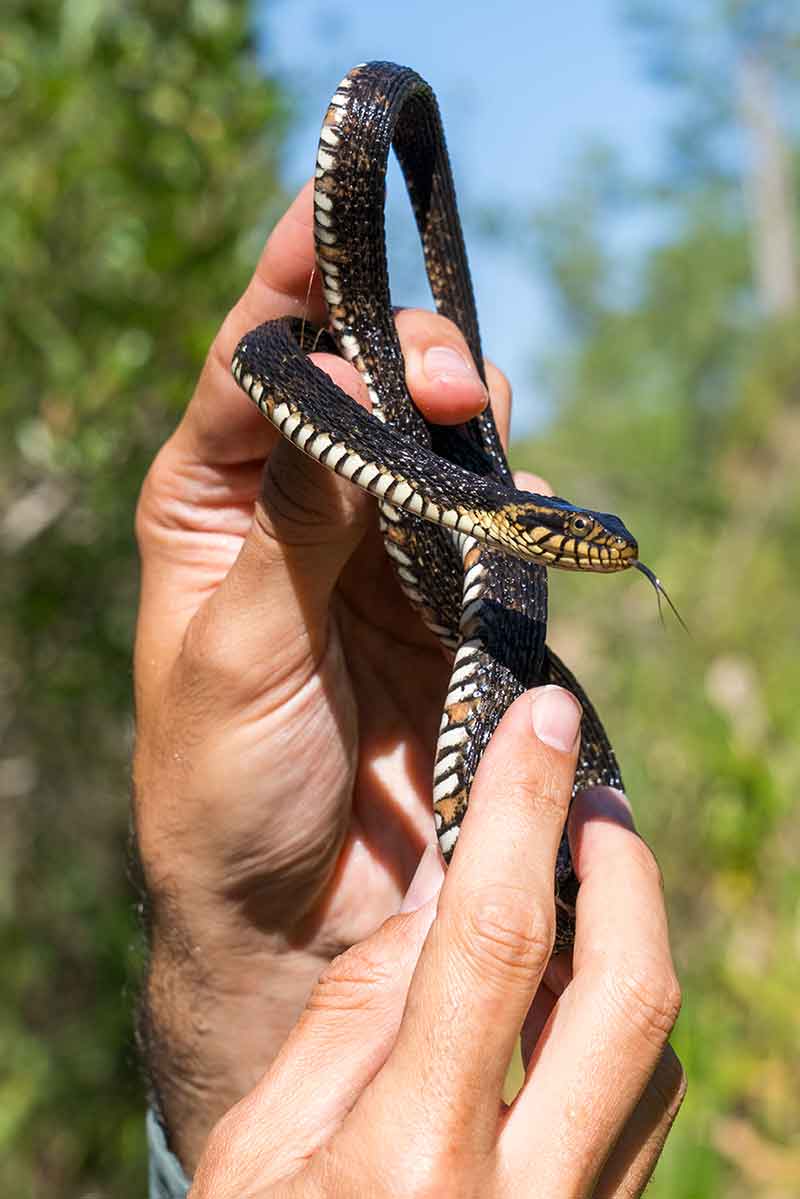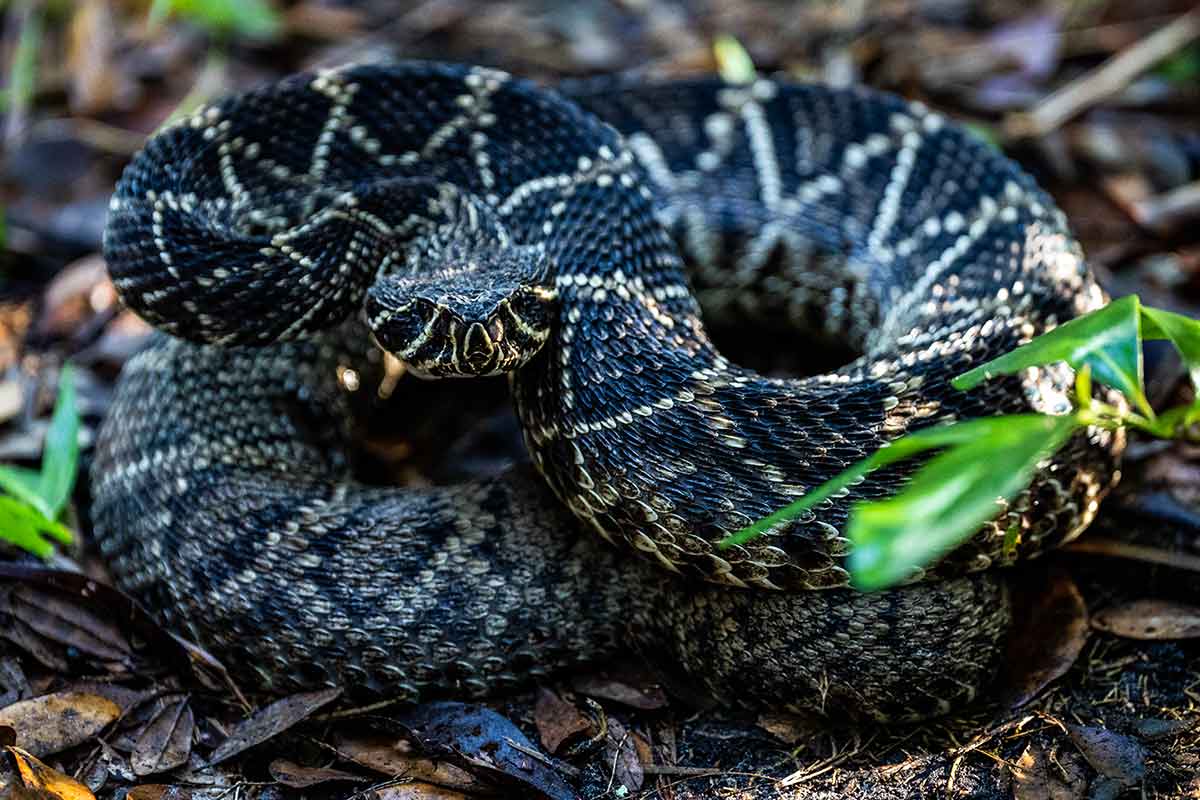3 wildlife predators that signify a healthy campus ecosystem
Alligators, snakes and eagles — oh my!
The presence of predators like these on the Florida Gulf Coast University campus is actually a sign of a healthy ecosystem, according to Charles “Billy” Gunnels, an urban and behavioral ecology expert and professor in the biology department in the College of Arts & Sciences.
“We’ve done a good job making sure we have environmental variations. We garden with native plants, which support insects and then animals. So, flowers lead to mosquitoes which lead to dragonflies which lead to fish which lead to predators,” he says. “Whether you came here or not because of the campus, you benefit from it.”
Here’s a closer look at a trio of predators sometimes seen on campus through the lens of photographers and Gunnels’ eagle eye.
Alligators among us
Part of the natural backdrop at FGCU, alligators are most often spotted lounging on basking platforms in ponds or motionless at the water’s edge. During mating season, things get more dramatic with deep rumbling calls and splashy courtship rituals.
Though intimidating, alligators are typically wary of humans.
“They’re reclusive, they’re shy, and they’re doing their own thing, which is resting,” Gunnels says. The South Village pond is probably the most reliable place to spot a gator, he says, along with ponds near Sugden and Whitaker Halls.
If you see one, keep your distance — especially if you see hatchlings nearby, since mothers will defend their young. And don’t ever feed gators. Besides being illegal, it teaches them to associate people with food — which can lead to dangerous encounters.
Warning signs are posted near areas they frequent, but alligators move in search of food or mates. “Public safety measures are in place, including coordinated responses from the University Police Department and our faculty experts,” Gunnels says.


Snakes slithering underfoot
Like alligators, snakes by nature tend to steer clear of humans. Cryptic coloring and markings, the term for characteristics that serve as camouflage, help many species blend into the environment and stay out of sight.
“We have a wide diversity of snakes, but most people will never see them,” Gunnels says. “The snake is going to do everything it can to avoid you or not be seen by you.”
Many people are afraid of snakes because they move quickly, and a few species are venomous. But he says, “The worst thing, most of the time, is that they’ll excrete on you.”
The most common snake seen on campus is the black racer — long, sleek, quick and harmless. Other species include corn snakes and banded water snakes. Much less common are venomous snakes, including cottonmouths and eastern diamondback rattlesnakes. “They’re incredibly cryptic,” Gunnels says. “They rarely rattle, so you’ve probably walked right by one.”
What misconceptions about snakes does he often encounter and correct?
“‘They’re coming to attack me.’ They’re not. ‘They’re all venomous.’ They’re not. ‘They’re all water moccasins.’ They’re not. ‘The only good snake is a dead snake.’ That’s the only sad snake.
“We want these animals. They control rodent, pest and insect populations — like cockroaches, termites and ants. And some snakes eat other snakes, like indigo snakes. They’re important predators for us, so don’t kill them.”

Based on more than 700 observations between 2021 and 2023 conducted by Gunnels and his team, snakes rattled 4% of the time. “This video is a rare and exceptional observation of a mad, defensive snake,” he says.

A convocation of Eagles
While FGCU’s mascot is an eagle, the campus is home to far more of the student variety of Eagles than the actual winged raptor.
Ospreys are more common campus sightings than bald eagles, Gunnels says, and people often mistake them for one another. For instance, the nest built years ago atop the campus’s tall main entrance landmark has belonged to ospreys — not eagles.
“Bald eagles do well along coastal environments and in central Florida near natural lakes all the way to the Georgia border,” he says. “They do less well in eastern Florida.”
Eagles prefer varied habitats, with uplands and lowlands, and tall, dead trees for nesting.
FGCU’s campus offers ideal features — ponds, wetlands, forests — but eagles need more than a good nest site. “Eagles need up to three miles from their nest with green spaces and open water. We’ve done an incredible job on our own campus but haven’t been as successful to encourage development strategies in the area” that would encourage nesting, Gunnels says.
Wild neighbors in shared spaces
From a behavioral ecology perspective, how do students, employees and visitors interact with FGCU’s wildlife — and how does human behavior influence animal movement on campus?
“Animals make it clear when humans are good,” Gunnels says. Their behavior explains whether they find humans threatening, inviting or ignorable. “If animals immediately scurry away, then they see humans as a danger. If they approach humans, that means they see you as a source of food. But FGCU’s animals are largely habituated and ignore us. It’s why you can watch a turtle or an alligator bask — students aren’t jumping in the ponds and bothering them. That’s good. That’s what I want to see.”
Every day, he says, students, employees and visitors have the privilege of walking through a wild landscape. Americans often think of nature as something separate from people — “as if ‘natural’ means we aren’t involved and ‘wild’ means we’re not there,” he says.
With a mix of 400 acres each of conservation and developed land, FGCU bridges that separation.
“There are very few places like this, that have tried to balance and integrate human and non-human species,” Gunnels says. “We’ve done a pretty good job at FGCU, with a lot more successes than failures. I’d love to see this model replicated.”
This article is one in a series highlighting FGCU’s distinctive campus.
Latest FGCU News
- Japan dream becomes reality for Eagle abroad
- 5 tiny creatures with a big campus presence
- From electronics to ales, alum keeps business ventures brewing
- Robot faces, fresh spaces and bold ideas launch FGCU’s fall semester
- From stealing bases to studying forensics, softball star sets the pace
- 10 public artworks that capture culture on campus













